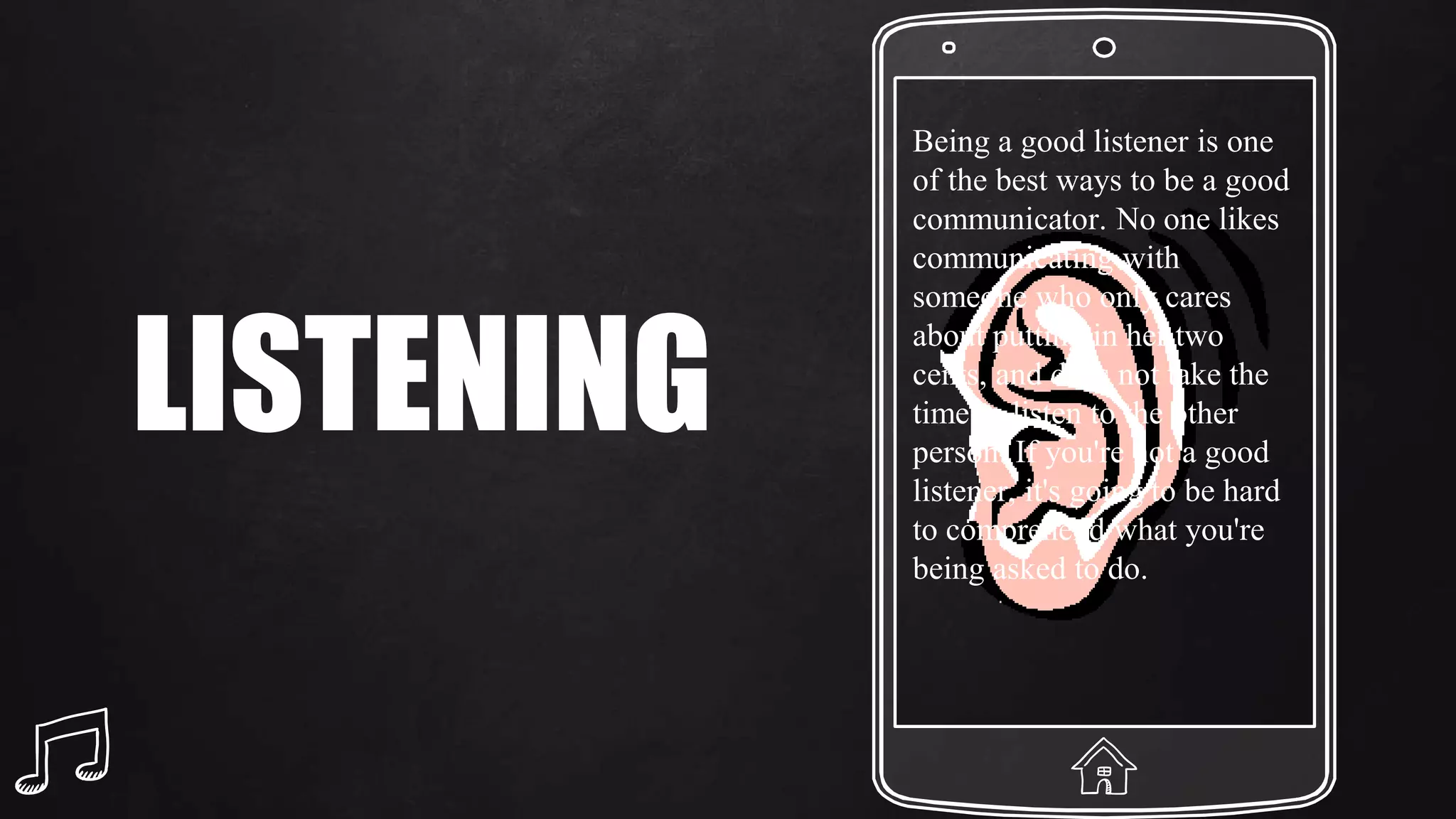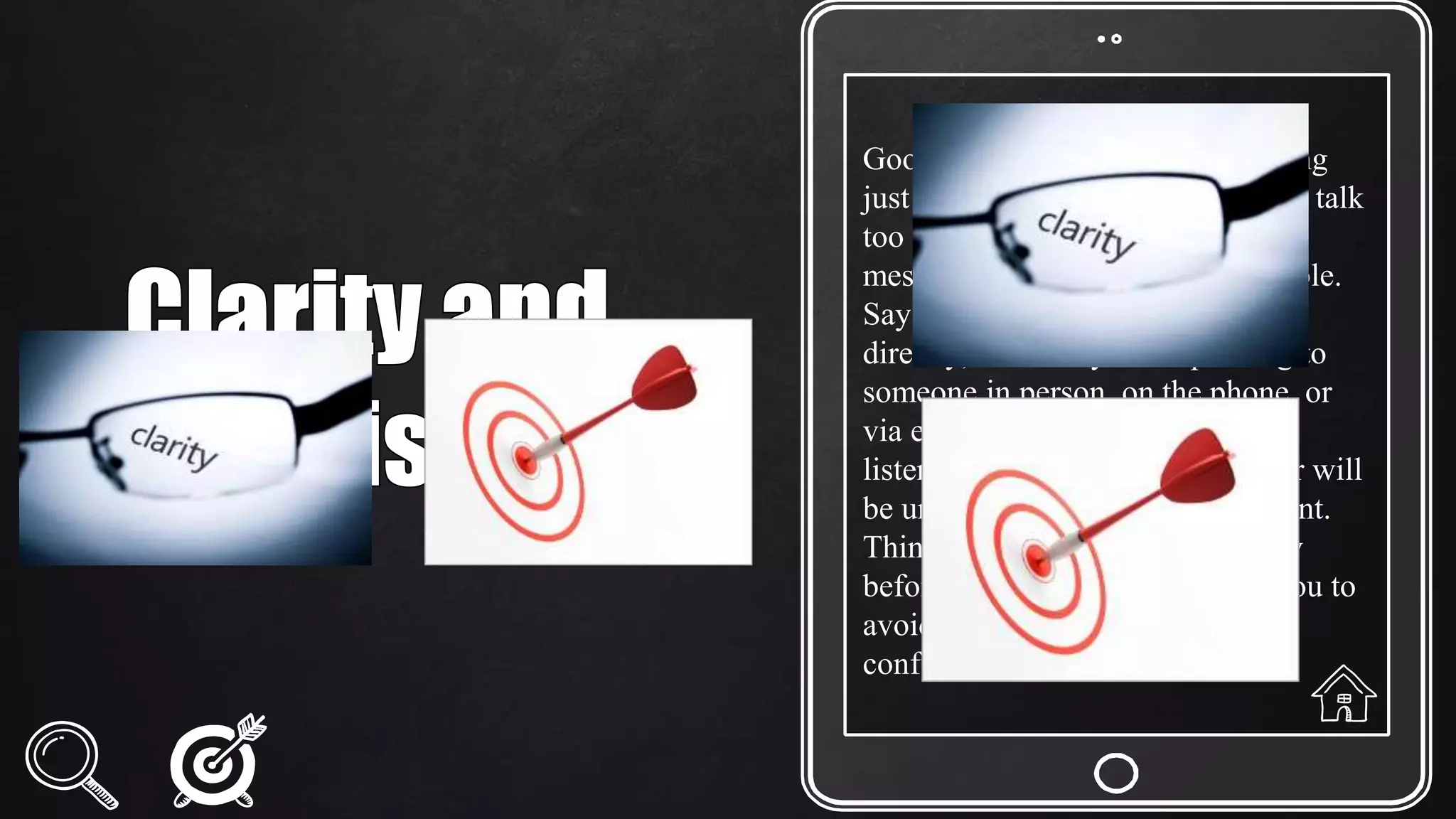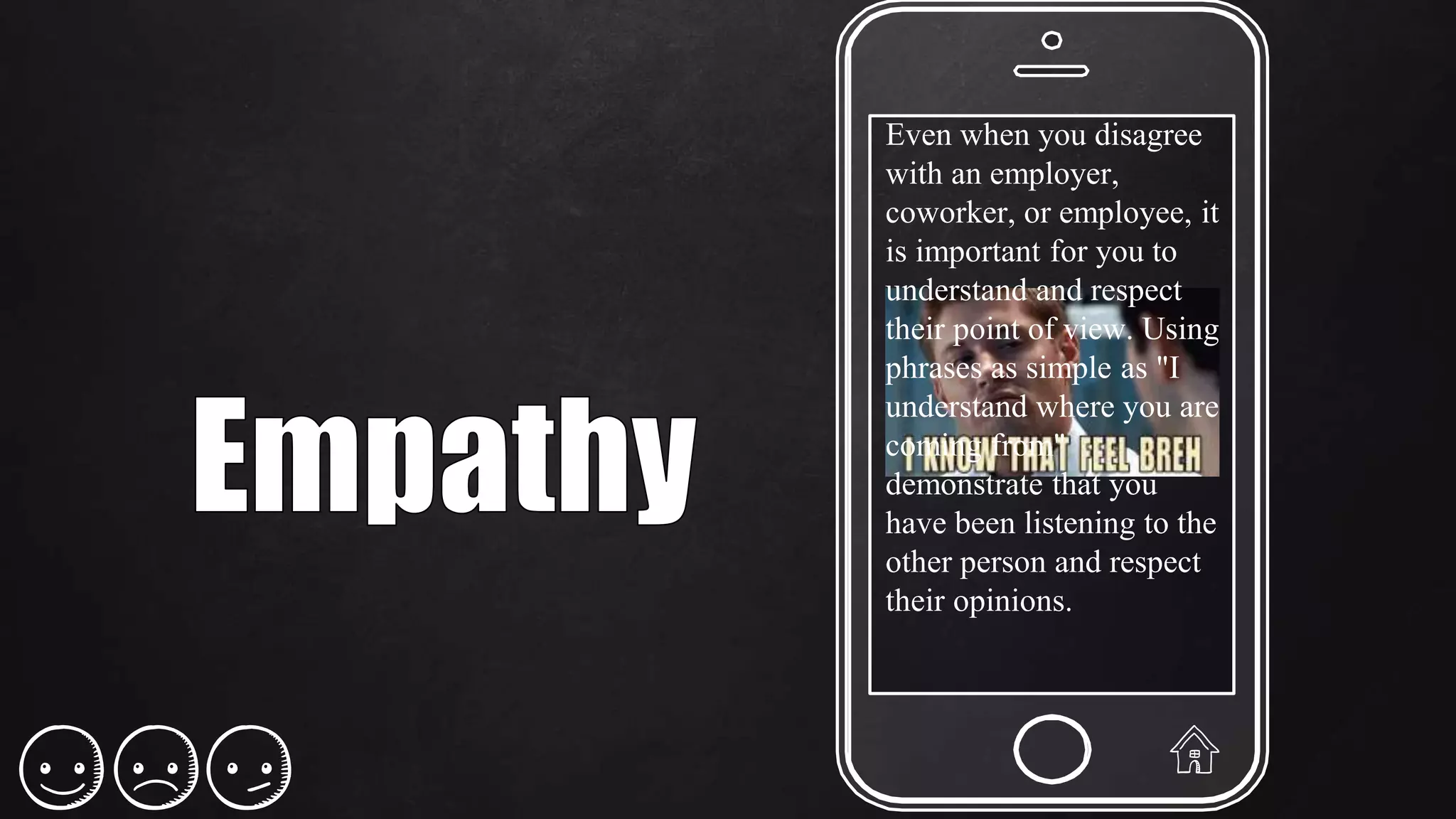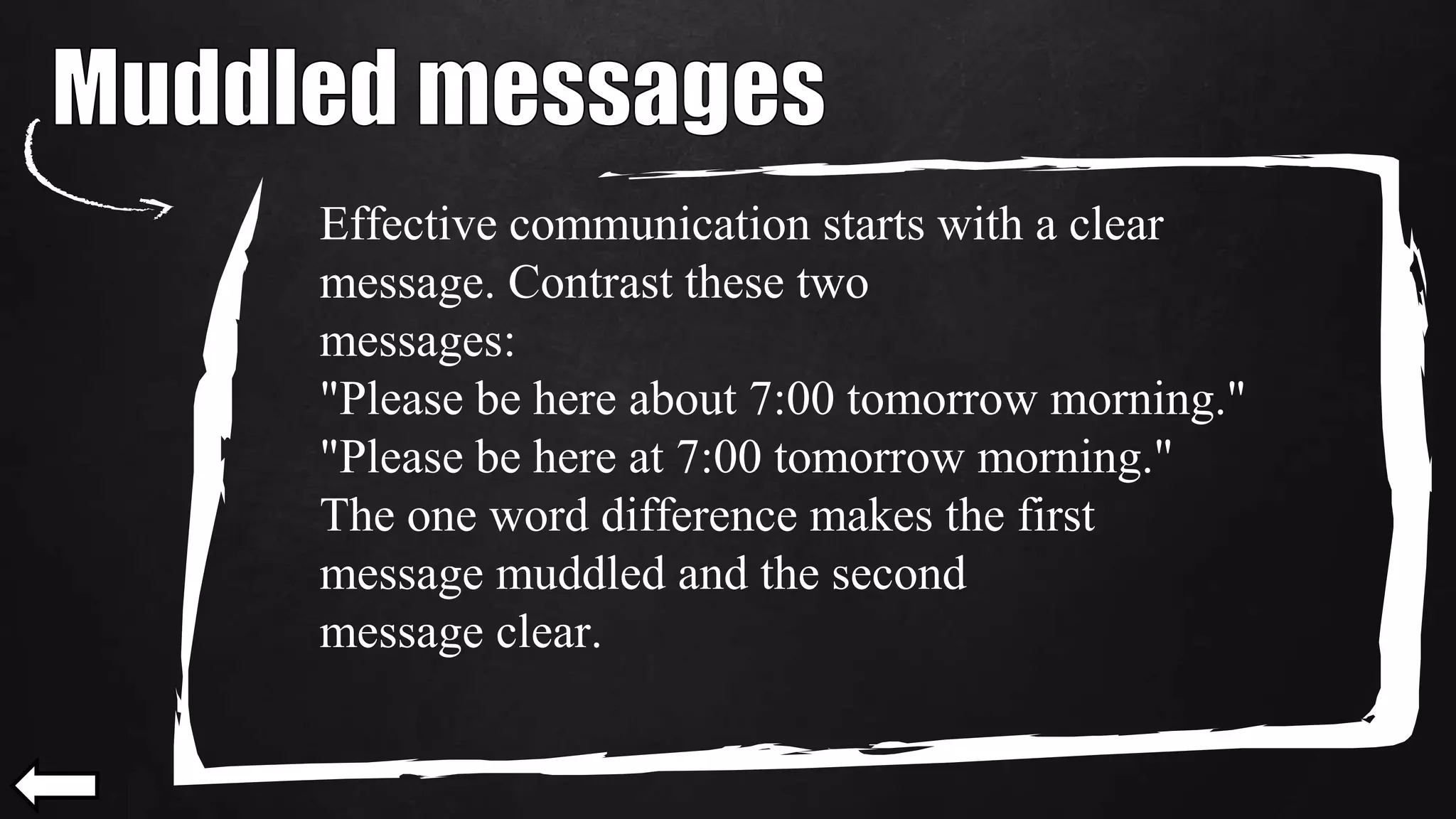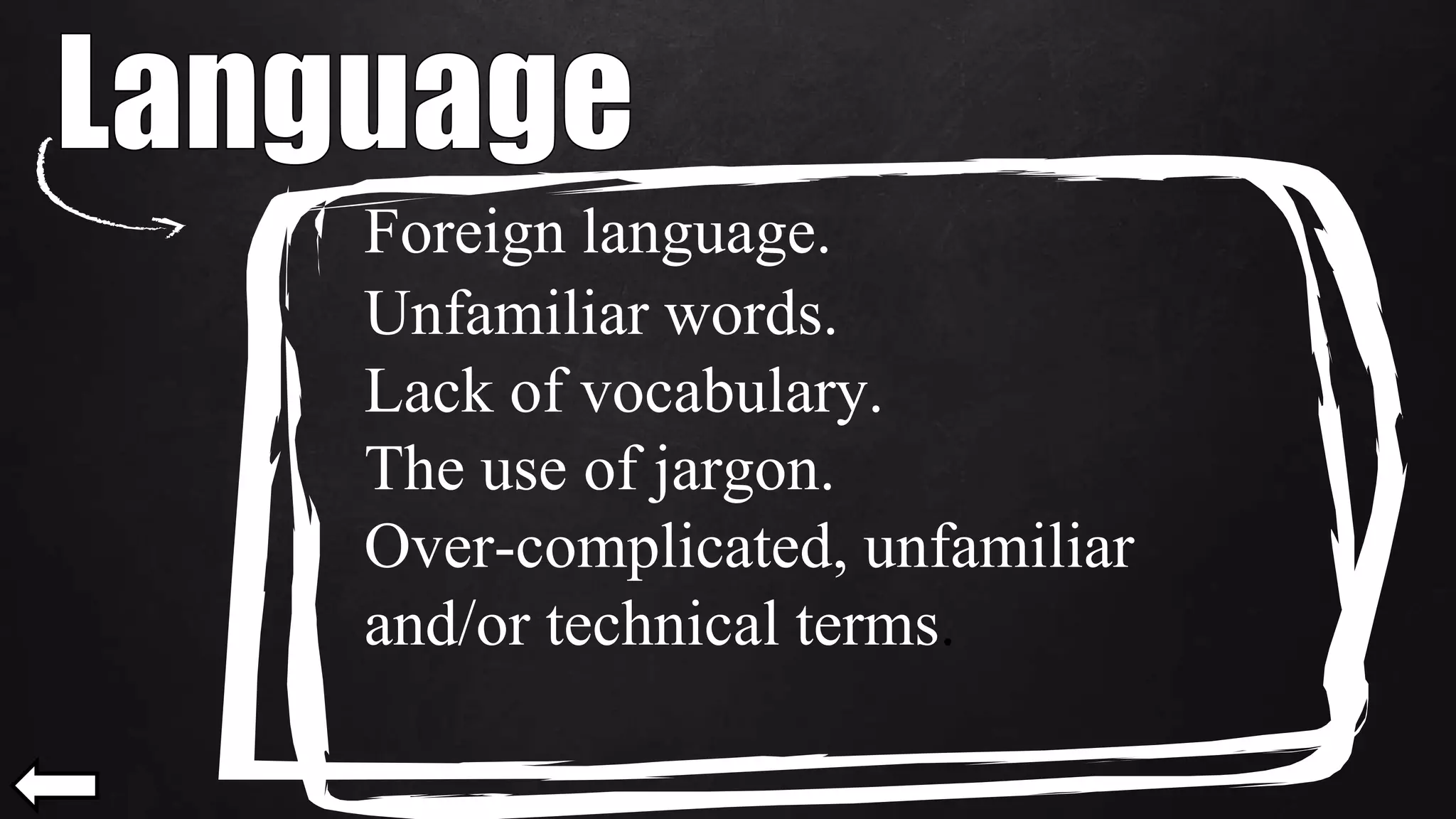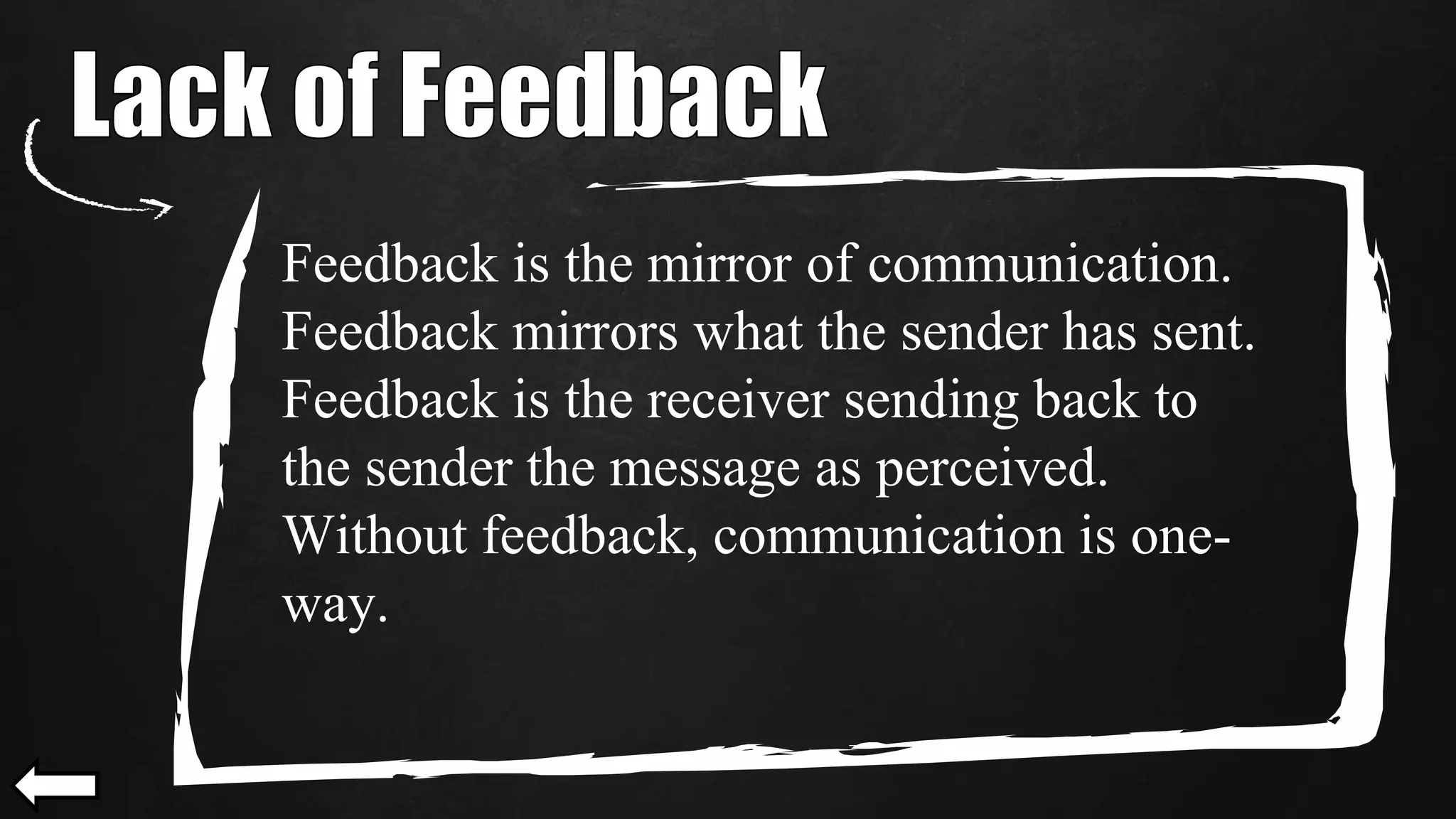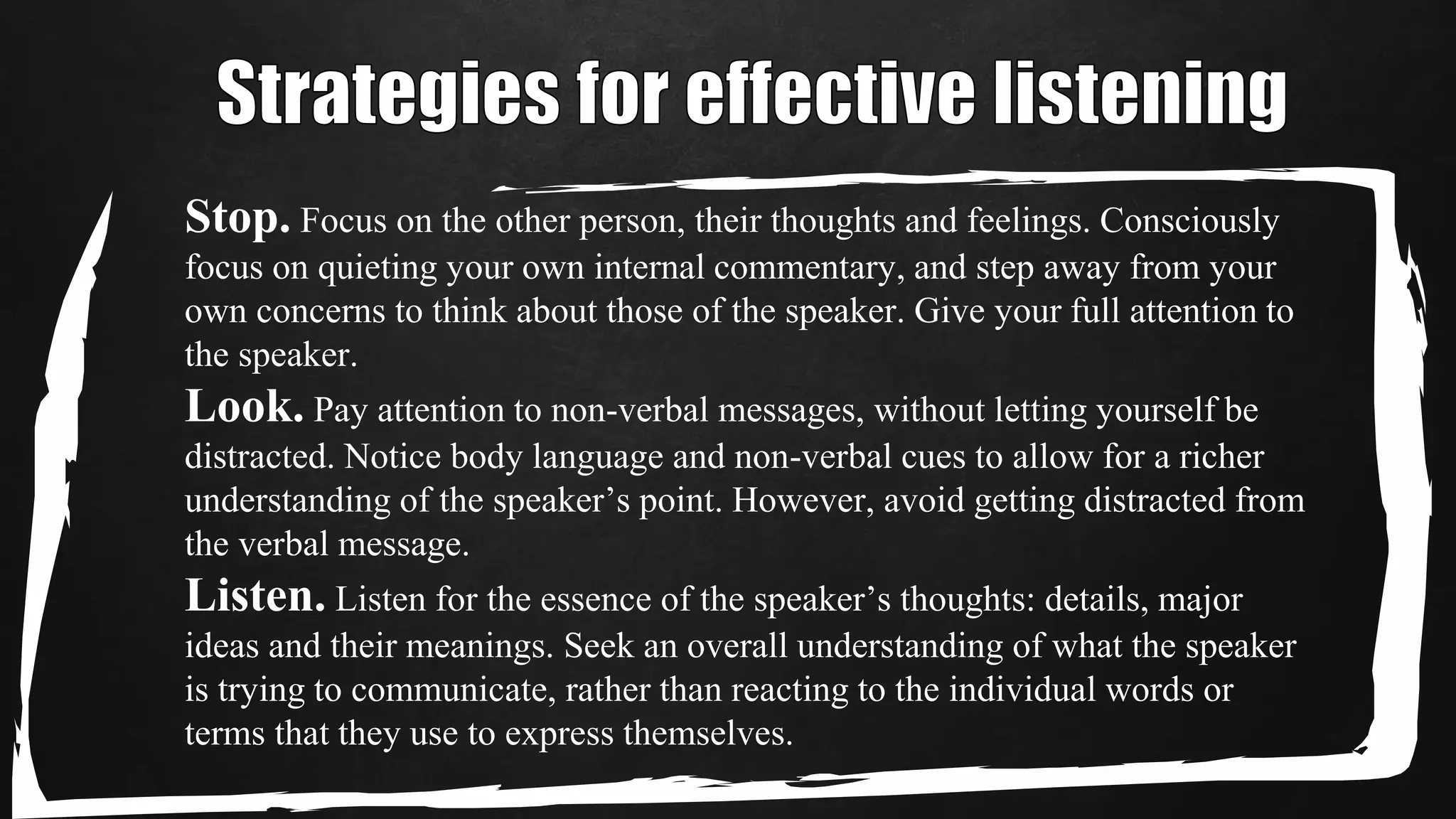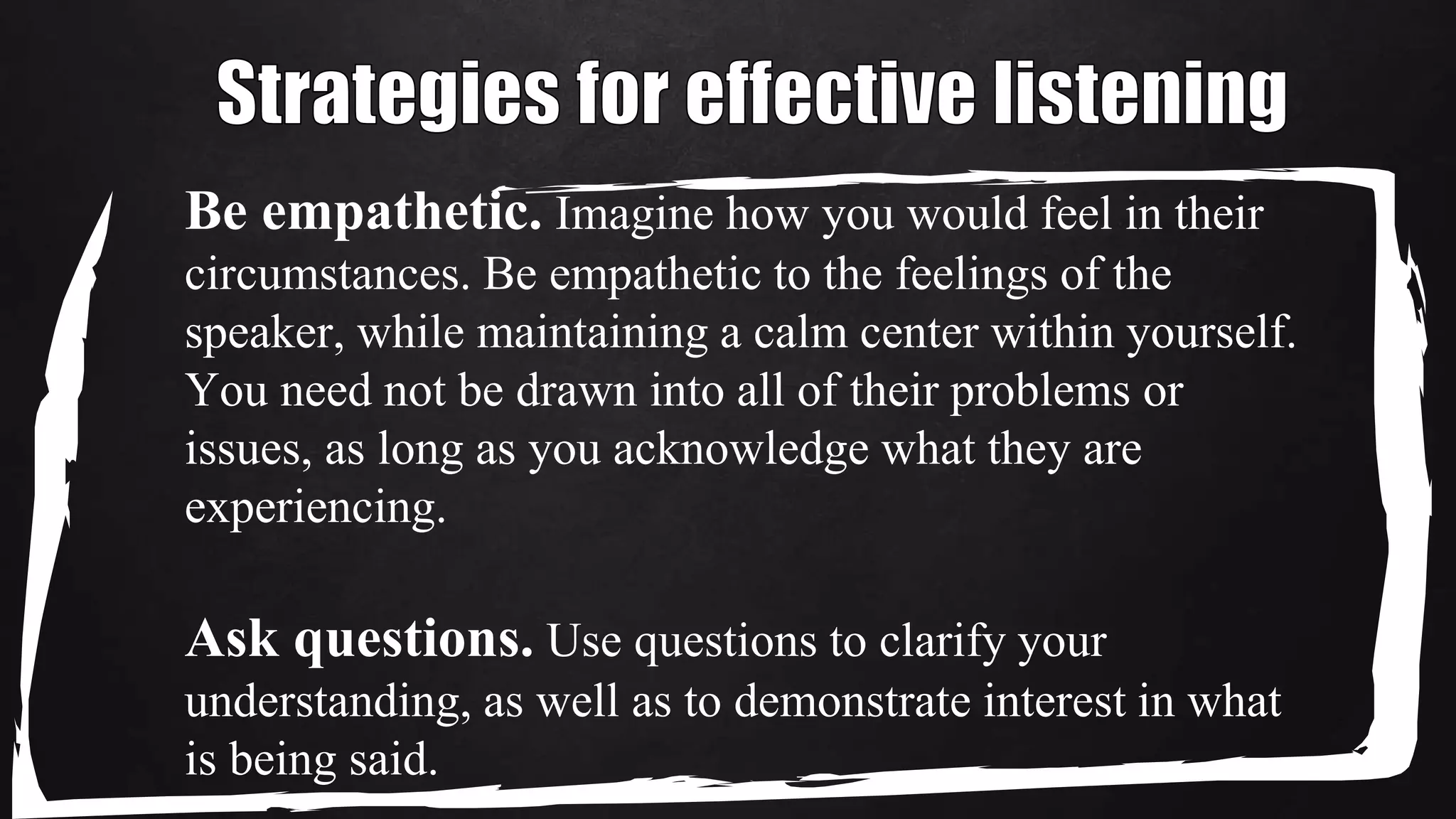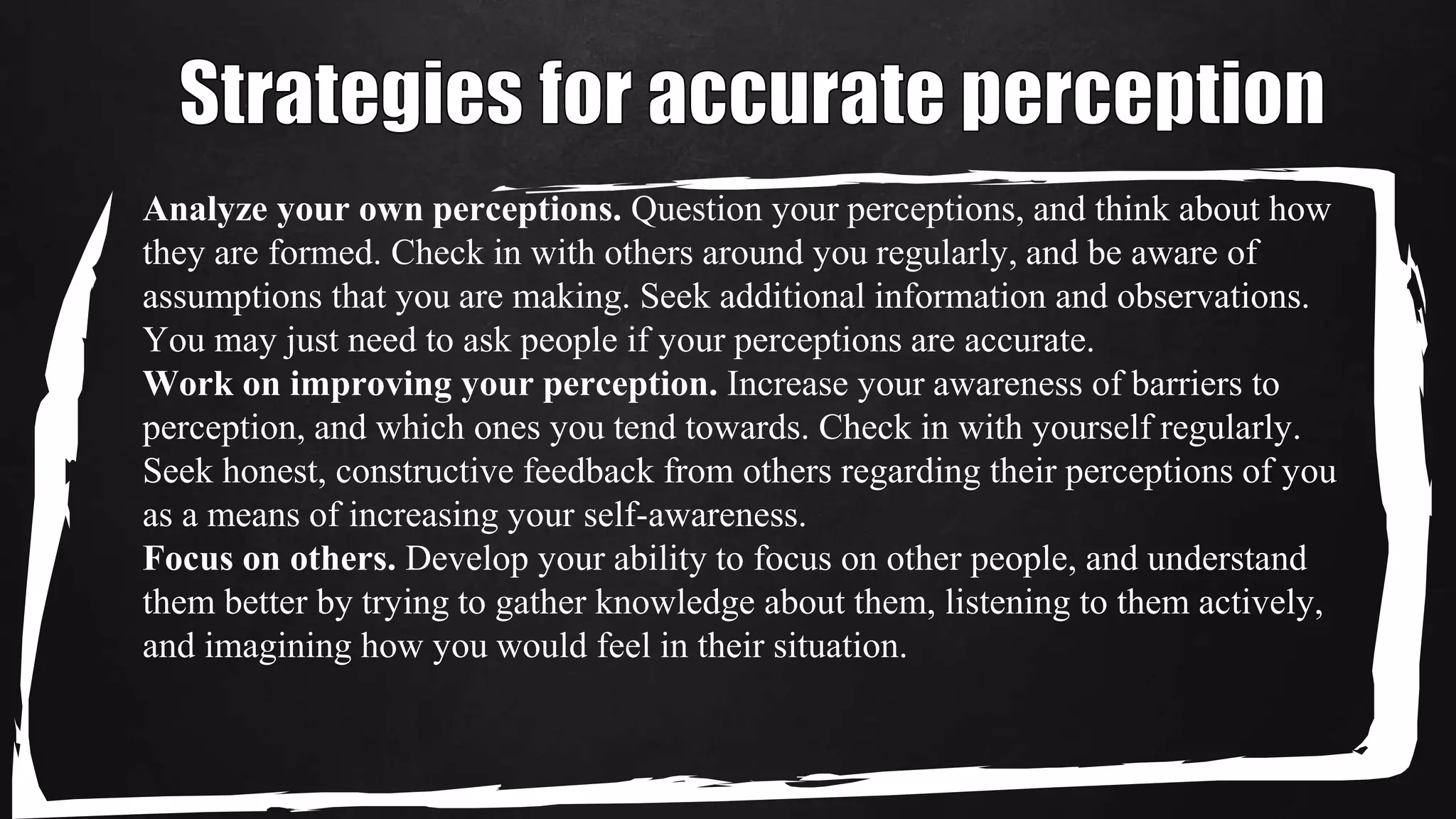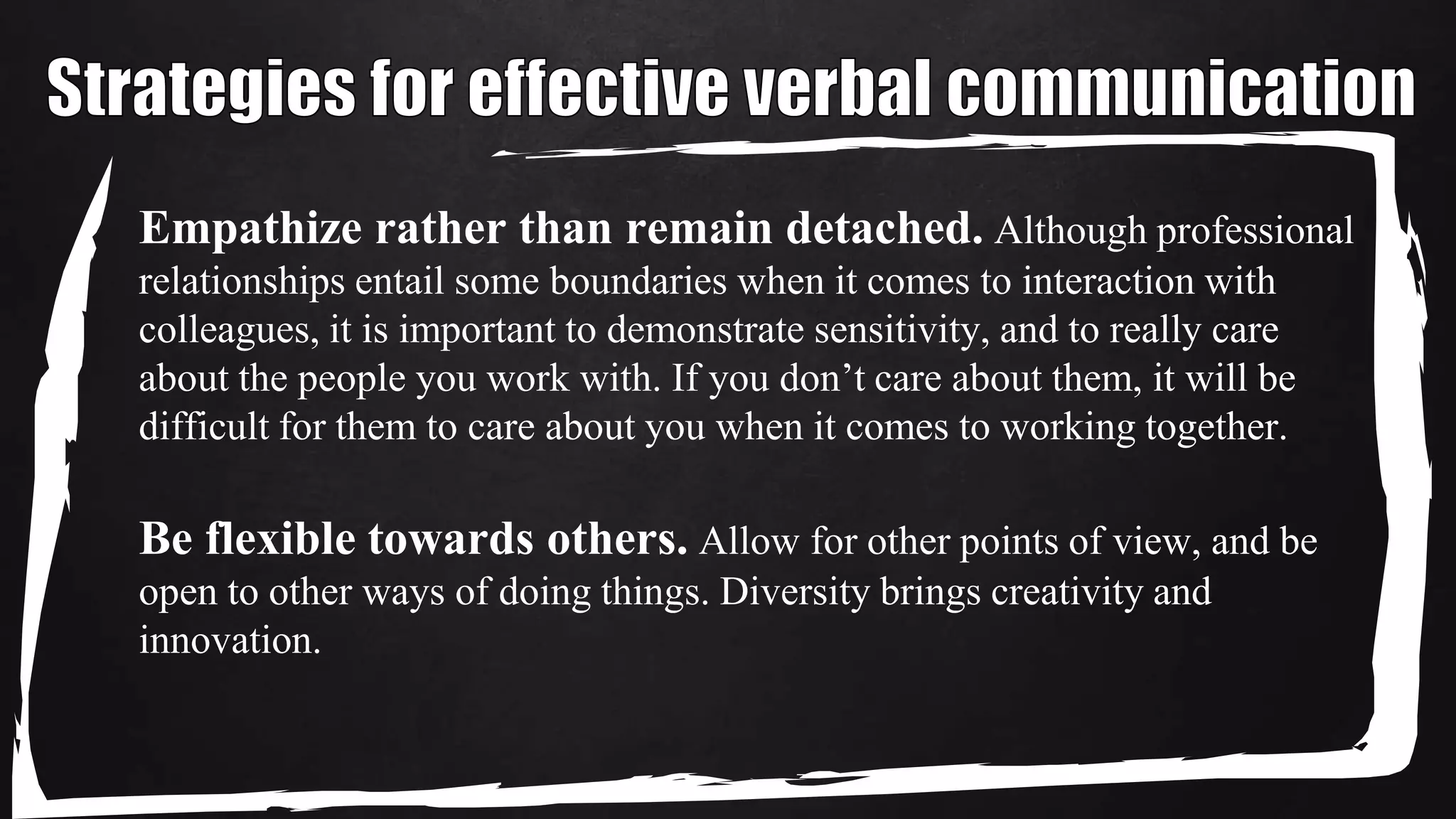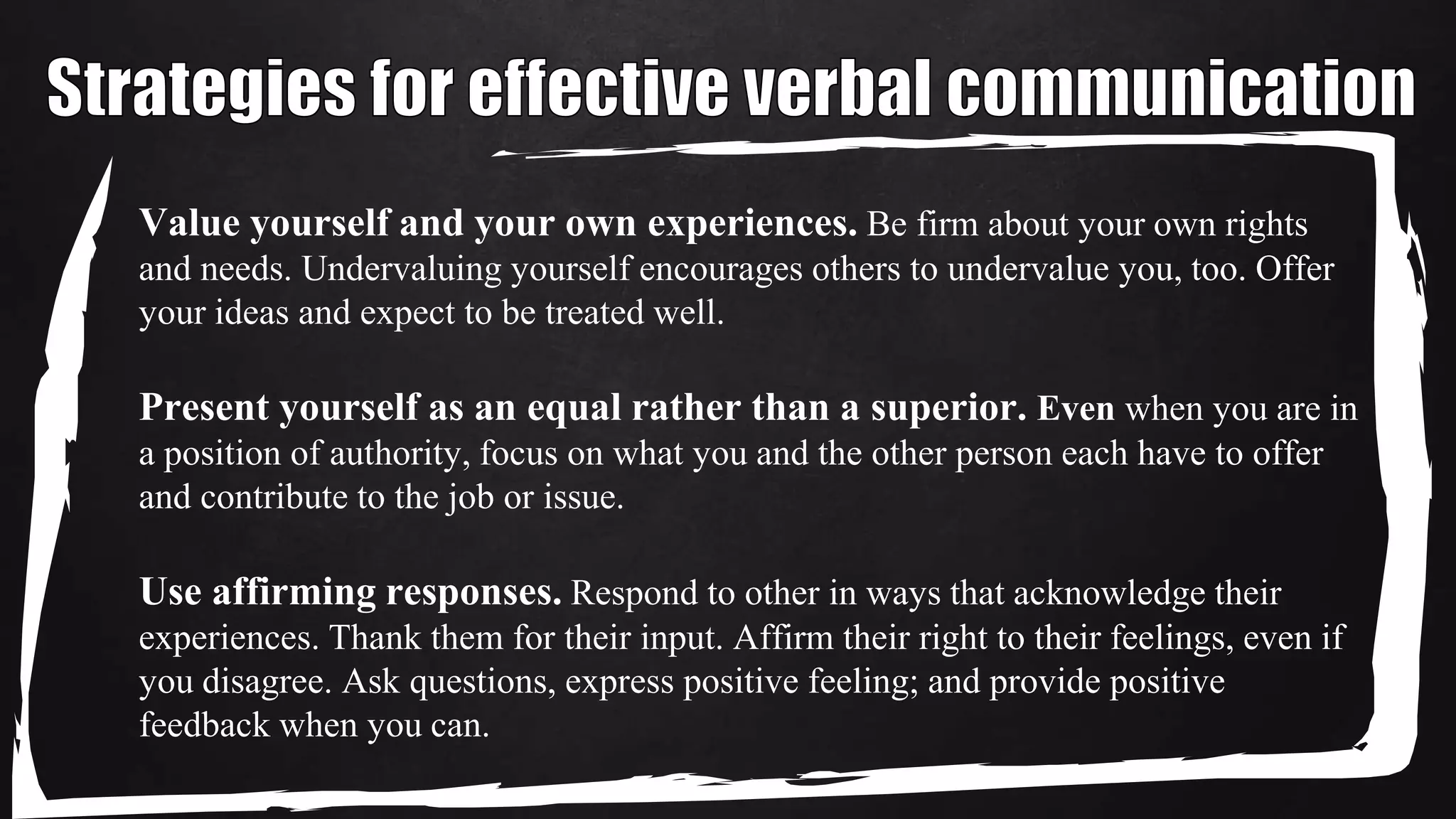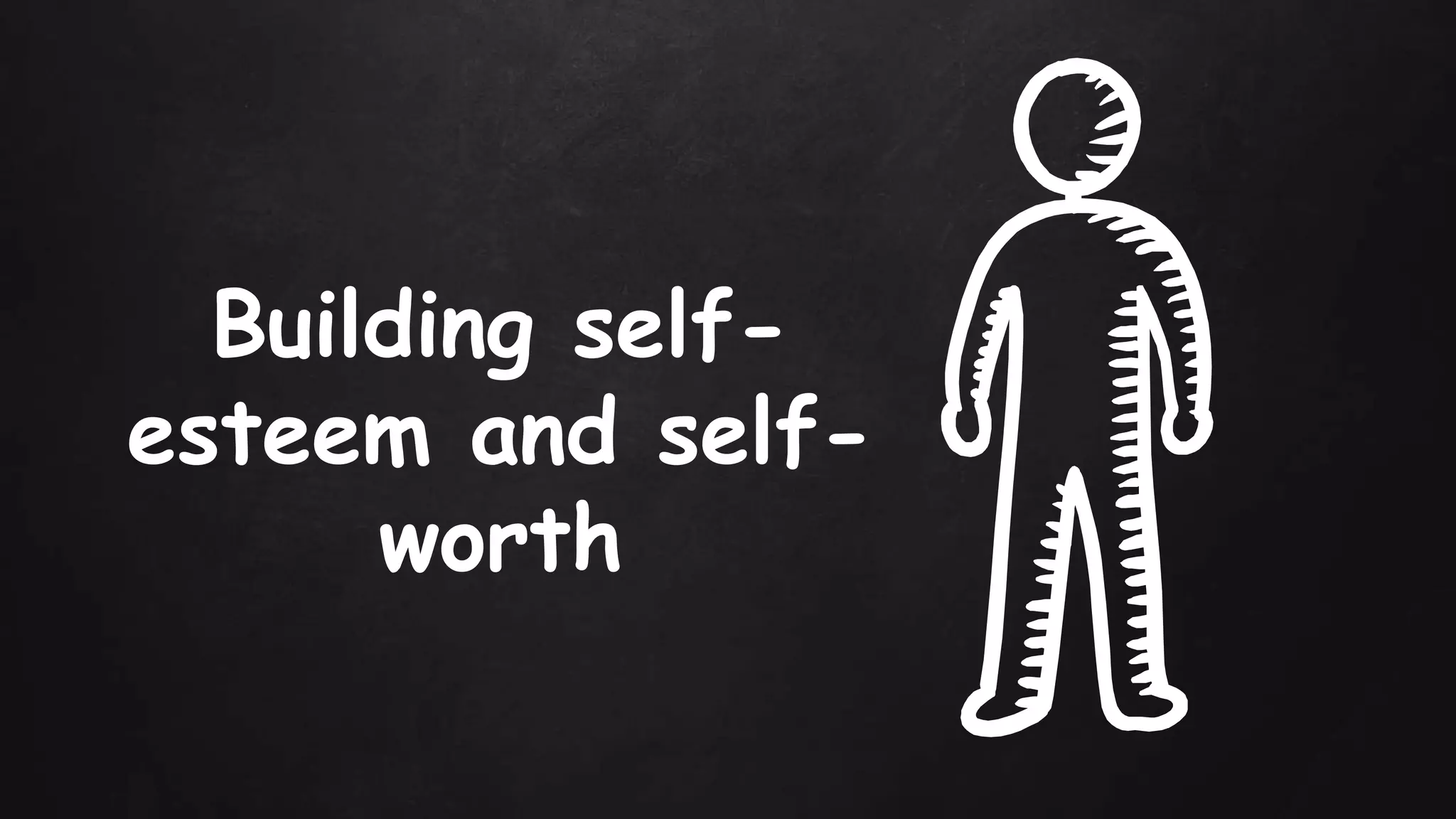The document discusses effective communication skills. It emphasizes the importance of listening, using clear and concise language, showing respect for others, giving and receiving feedback, and being adaptable in one's communication approach. Specific tips are provided such as maintaining eye contact, using a friendly tone, personalizing messages, and understanding other perspectives. Overcoming barriers like assumptions, distractions, and language differences is also addressed.



